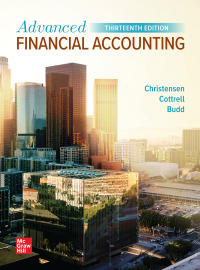Question
2. Disposal of Assets A company has an inventory of 2,050 different parts for a line of cars that has been discontinued. The net book
2. Disposal of Assets A company has an inventory of 2,050 different parts for a line of cars that has been discontinued. The net book value (NBV) of this inventory is $51,250. Either the parts can be re-machined at a total additional cost of $25,625 and then sold for $30,750, or the parts can be sold as-is for $2,550.
Required:
Is there a net benefit or a net loss from remachining the parts versus scrapping the parts?
|
3.
Asset Replacement An uninsured boat costing $90,200 was wrecked the first day it was used. It can be either sold as-is for $9,020 cash and replaced with a similar boat costing $92,300 or rebuilt for $75,200 and be brand new as far as operating characteristics and looks are concerned.
Required:
What is the difference in cost between the two options?
Based on financial considerations, what should the company do?
multiple choice
-
Sell as-is for $9,020 cash and replace with a similar boat costing $92,300.
-
Rebuild for $75,200.
4.
Profit from Processing Further Deaton Corporation manufactures products A, B, and C from a joint process. Joint costs are allocated on the basis of relative sales value of the products at the split-off point. Additional information for Deaton Corporation follows:
| A | B | C | Total | |
|---|---|---|---|---|
| Units produced | 13,200 | 8,800 | 4,400 | 26,400 |
| Joint costs | $ 158,400 | $ 66,000 | $ 39,600 | $ 264,000 |
| Sales value before additional processing | 264,000 | 110,000 | 66,000 | 440,000 |
| Additional costs for further processing | 30,800 | 22,000 | 13,200 | 66,000 |
| Sales value if processed further | 308,000 | 132,000 | 77,000 | 517,000 |
Required:
2a. For each of the three products (A, B, and C), calculate the differential benefit (loss) from processing the product after the split-off point rather than selling the product at the split-off point. (Loss amounts should be indicated with a minus sign.)
5.
Make vs. Buy (Sourcing Decision) Eggers Company needs 21,000 units of a part to use in producing one of its products. If Eggers buys the part from McMillan Company for $90 instead of making it, Eggers will not use the released facilities in another manufacturing activity. Forty percent of the fixed overhead will continue irrespective of CEO Donald Mickeys decision. The cost data are as follows:
Cost to make the part:
| Direct materials | $ 30 |
|---|---|
| Direct labor | 12 |
| Variable overhead | 20 |
| Fixed overhead | 30 |
| $ 92 |
Required:
1. Determine which alternative is more attractive to Eggers, and by what amount.
6.
Short-Term Product-Mix Decision DVD Production Company produces two basic types of video games, Flash and Clash. Pertinent data for DVD Production Company follow:
| Flash | Clash | |
|---|---|---|
| Sales price | $ 280 | $ 155 |
| Costs | ||
| Direct materials | 55 | 25 |
| Direct labor (@ $25/hour) | 100 | 50 |
| Variable factory overhead* | 55 | 50 |
| Fixed factory overhead* | 25 | 15 |
| Marketing costs (all fixed) | 15 | 10 |
| Total costs | $ 250 | $ 150 |
| Operating profit | $ 30 | $ 5 |
*Based on direct labor hours: 4 direct labor hours (DLHs) per unit of Flash and 2 DLHs per unit of Clash.
The DVD game craze is at its height so that either Flash or Clash alone can be sold to keep the plant operating at full capacity. However, labor capacity in the plant is insufficient to meet the combined demand for both games. Flash and Clash are processed through the same production departments.
Required:
2a. Calculate the contribution margin per labor hour for both Flash and Clash. (Round your answers to 2 decimal places.)
7.
Special-Order Pricing Barrys Bar-B-Que is a popular lunch-time spot. Barry is conscientious about the quality of his meals, and he has a regular crowd of 500 patrons for his $5.80 lunch. His variable cost for each meal is about $2.10, and he figures his fixed costs, on a daily basis, are about $1,300. From time to time, bus-tour groups with 50 patrons stop by. He has welcomed them because he has capacity to seat 600 diners in the average lunch period, and his cooking and wait staff can easily handle the additional load. The tour operator generally pays for the entire group on a single check to save the wait staff and cashier the additional time. Due to competitive conditions in the tour business, the operator is now asking Barry to lower the price to $3.60 per meal for each of the 50 bus-tour members. (Negative amounts should be indicated by a minus sign. Round your answers to 2 decimal places.)
Required:
1-a. What is the incremental profit (loss) per bus-tour meal?
1-b. Should Barry accept the bus-tour offer?
2-a. At least once per month, the tour company is in a position to guarantee 200 patrons (or four bus loads) in a single day. On those days, the tour company is asking for an even lower price of $3.20 per meal. What is the incremental profit (loss) for each meal?
2-b. Is the offer financially attractive?
Step by Step Solution
There are 3 Steps involved in it
Step: 1

Get Instant Access to Expert-Tailored Solutions
See step-by-step solutions with expert insights and AI powered tools for academic success
Step: 2

Step: 3

Ace Your Homework with AI
Get the answers you need in no time with our AI-driven, step-by-step assistance
Get Started


